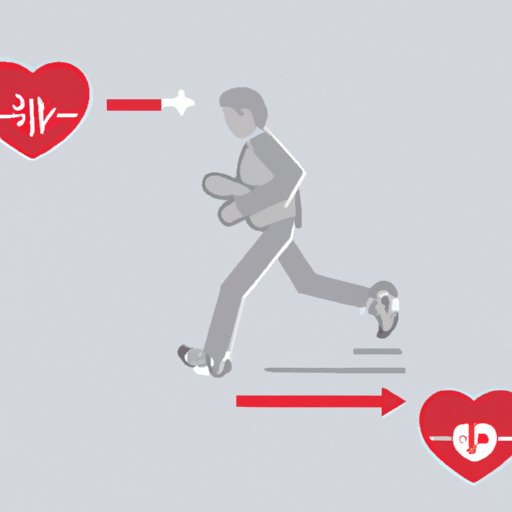Introduction
Your heart rate is a measure of how many times your heart beats per minute. It is an important indicator of your overall health and fitness level. Monitoring your walking heart rate can help you to better understand how your body responds to different levels of exercise intensity and provide insights into any changes in your overall health.
Definition of Walking Heart Rate
Walking heart rate is the number of heartbeats per minute (bpm) that occur while walking. This measurement is used to evaluate the intensity of your workout and monitor your overall cardiovascular health. A healthy walking heart rate should be within the range of 50-85% of your maximum heart rate (MHR). Your MHR can be calculated by subtracting your age from 220.
Benefits of a Healthy Walking Heart Rate
A healthy walking heart rate has many benefits, including improved cardiovascular health, increased energy levels, and reduced risk of injury. Regularly monitoring your walking heart rate can also help you to stay motivated and reach your fitness goals. Additionally, tracking your progress over time can help you identify any potential problems or changes in your health.
How to Measure Your Walking Heart Rate
There are two main ways to measure your walking heart rate: wearable technology and manual measurement.
Wearable Technology
The most common way to measure your walking heart rate is with a wearable device such as a fitness tracker or smartwatch. These devices use sensors to track your heart rate while you walk. Many of them also come with other features such as step counting and calorie tracking.
Manual Measurement
You can also manually measure your walking heart rate by taking your pulse. To do this, place your index and middle fingers on the side of your neck near your jawbone. Count the number of beats you feel in 10 seconds and then multiply that number by 6 to get your heart rate in bpm.

Understanding the Relationship Between Walking and Heart Health
Walking is one of the most effective forms of exercise for improving cardiovascular health. According to the Physical Activity Guidelines for Americans, adults should aim for at least 150 minutes of moderate to vigorous aerobic activity per week. Moderate intensity activities, such as brisk walking, can help reduce your risk of chronic diseases such as diabetes, heart disease, and stroke.

Tips for Maintaining an Optimal Walking Heart Rate
In order to maintain an optimal walking heart rate, it’s important to warm up and cool down before and after each walk. This helps to gradually increase and decrease your heart rate and reduce the risk of injury. Additionally, focus on breathing deeply and evenly during your walk to ensure that your heart rate remains in the right range. Lastly, try to monitor the intensity of your walks to make sure you’re not pushing yourself too hard.
Why Monitoring Your Walking Heart Rate is Important
Monitoring your walking heart rate is important for several reasons. First, it allows you to become more aware of your own body and its limits. This can help you to avoid injuries and know when to push yourself harder. Second, it can help you to track your progress over time and make sure that you’re reaching your fitness goals.

The Link Between Walking Speed and Heart Rate
The speed at which you walk can have an impact on your heart rate. Several factors can influence your walking speed, such as your height, weight, and fitness level. As your walking speed increases, so does your heart rate. Therefore, it’s important to monitor both your walking speed and heart rate to make sure you’re exercising at a safe intensity.

What to Do if Your Walking Heart Rate is Too High or Low
If your walking heart rate is too high or too low, there may be an underlying medical issue. Common causes of abnormal heart rate include stress, anxiety, dehydration, electrolyte imbalances, and certain medications. If you experience any symptoms such as dizziness, chest pain, or shortness of breath, contact your doctor immediately. Treatment options may include lifestyle modifications, medication, or other therapies.
Conclusion
In conclusion, understanding and monitoring your walking heart rate is an important part of maintaining your overall health and fitness level. A healthy walking heart rate should be within the range of 50-85% of your maximum heart rate. Regularly monitoring your walking heart rate can help you to identify any potential issues and adjust your exercise routine accordingly.
(Note: Is this article not meeting your expectations? Do you have knowledge or insights to share? Unlock new opportunities and expand your reach by joining our authors team. Click Registration to join us and share your expertise with our readers.)
